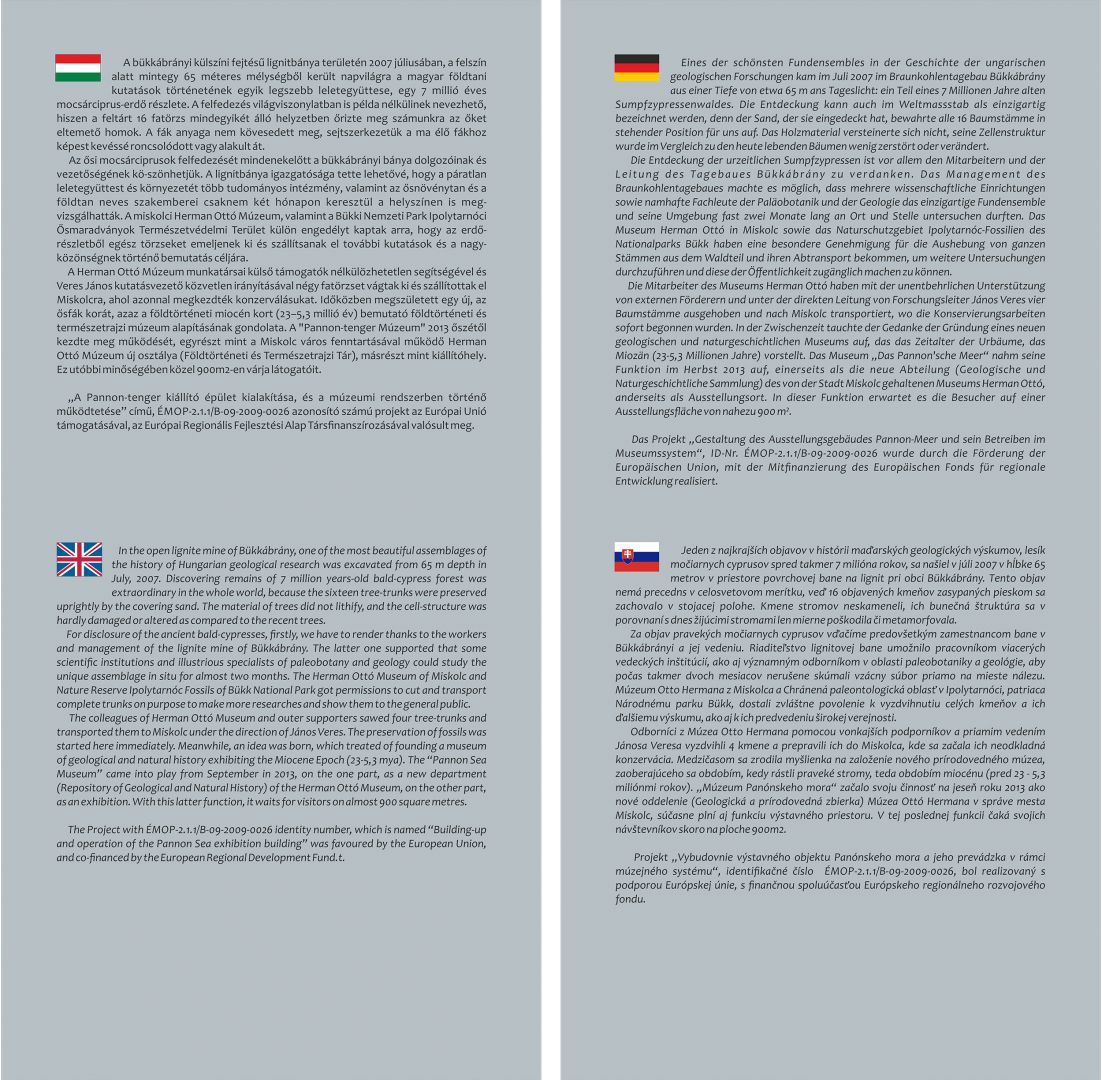INTRODUCTION - 2. view
Introduction
In the open lignite mine of Bükkábrány, one of the most beautiful assemblages of the history of Hungarian geological research was excavated from 65 m depth in July, 2007. Discovering remains of 7 million years-old bald-cypress forest was extraordinary in the whole world, because the sixteen tree-trunks were preserved uprightly by the covering sand. The material of trees did not lithify, and the cell-structure was hardly damaged or altered as compared to the recent trees.
For disclosure of the ancient bald-cypresses, firstly, we have to render thanks to the workers and management of the lignite mine of Bükkábrány. The latter one supported that some scientific institutions and illustrious specialists of paleobotany and geology could study the unique assemblage in situ for almost two months. The Herman Ottó Museum of Miskolc and Nature Reserve Ipolytarnóc Fossils of Bükk National Park got permissions to cut and transport complete trunks on purpose to make more researches and show them to the general public.
The colleagues of Herman Ottó Museum and outer supporters sawed four tree-trunks and transported them to Miskolc under the direction of János Veres. The preservation of fossils was started here immediately. Meanwhile, an idea was born, which treated of founding a museum of geological and natural history exhibiting the Miocene Epoch (23-5,3 mya). The “Pannon Sea Museum” came into play from September in 2013, on the one part, as a new department (Repository of Geological and Natural History) of the Herman Ottó Museum, on the other part, as an exhibition. With this latter function, it waits for visitors on almost 900 square metres.
The Project with ÉMOP-2.1.1/B-09-2009-0026 identity number, which is named “Building-up and operation of the Pannon Sea exhibition building” was favoured by the European Union, and co-financed by the European Regional Development Fund.
